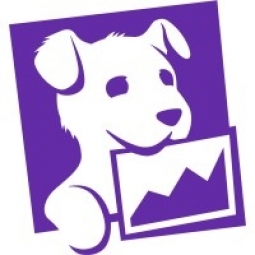公司规模
Large Corporate
地区
- America
国家
- Argentina
产品
- Datadog Security Monitoring
技术栈
- Datadog
实施规模
- Enterprise-wide Deployment
影响指标
- Cost Savings
- Customer Satisfaction
技术
- 分析与建模 - 实时分析
适用行业
- 食品与饮料
适用功能
- 销售与市场营销
用例
- 欺诈识别
服务
- 网络安全服务
关于客户
PedidosYa 成立于 2009 年,是 Delivery Hero 集团旗下的成员公司,也是拉丁美洲在线订餐市场的领导者。PedidosYa 拥有一款创新的网页和移动应用,让用户可以访问该地区六个国家的 12,000 家餐厅。该公司在为新用户推出免费餐券时面临挑战。用户会从不同的 IP 地址创建多个帐户来接收多张餐券,这种情况很难发现和大规模预防。
挑战
Delivery Hero 团队的成员 PedidosYa 在公司为新用户推出免费食品券时面临挑战。用户从不同的 IP 地址创建多个帐户以接收多张优惠券,但这种行为很难大规模发现和预防。当时,该团队的威胁检测工作流程涉及为他们运营的每个域手动创建防火墙检测规则,这项工作非常繁琐、耗时,并且需要大量维护。随着欺诈活动的增加,为每个需要阻止的 IP 地址创建单独的规则变得不可能。这个过程导致检测延迟一个月,这给了恶意行为者足够的时间来实现他们的目标。
解决方案
PedidosYa 之所以选择 Datadog,是因为它提供可定制的开箱即用威胁检测规则,有助于对整个技术堆栈中的恶意模式进行全面的安全分析。这些灵活的检测规则可实时识别各种攻击者技术,并映射到 MITRE ATT&CK 框架。Datadog 广泛的标记系统允许用户以逻辑方式对安全信号进行分组,例如按服务、区域或 IP 地址分组。这种分组和可视化安全数据的能力简化了复杂系统(例如 PedidosYa 的系统)的威胁检测流程。Datadog 安全监控还配备了专家构建的开箱即用仪表板,可提供所有安全相关数据的概览。
运营影响
数量效益

Case Study missing?
Start adding your own!
Register with your work email and create a new case study profile for your business.
相关案例.

Case Study
The Kellogg Company
Kellogg keeps a close eye on its trade spend, analyzing large volumes of data and running complex simulations to predict which promotional activities will be the most effective. Kellogg needed to decrease the trade spend but its traditional relational database on premises could not keep up with the pace of demand.

Case Study
HEINEKEN Uses the Cloud to Reach 10.5 Million Consumers
For 2012 campaign, the Bond promotion, it planned to launch the campaign at the same time everywhere on the planet. That created unprecedented challenges for HEINEKEN—nowhere more so than in its technology operation. The primary digital content for the campaign was a 100-megabyte movie that had to play flawlessly for millions of viewers worldwide. After all, Bond never fails. No one was going to tolerate a technology failure that might bruise his brand.Previously, HEINEKEN had supported digital media at its outsourced datacenter. But that datacenter lacked the computing resources HEINEKEN needed, and building them—especially to support peak traffic that would total millions of simultaneous hits—would have been both time-consuming and expensive. Nor would it have provided the geographic reach that HEINEKEN needed to minimize latency worldwide.

Case Study
Energy Management System at Sugar Industry
The company wanted to use the information from the system to claim under the renewable energy certificate scheme. The benefit to the company under the renewable energy certificates is Rs 75 million a year. To enable the above, an end-to-end solution for load monitoring, consumption monitoring, online data monitoring, automatic meter data acquisition which can be exported to SAP and other applications is required.

Case Study
Coca Cola Swaziland Conco Case Study
Coco Cola Swaziland, South Africa would like to find a solution that would enable the following results: - Reduce energy consumption by 20% in one year. - Formulate a series of strategic initiatives that would enlist the commitment of corporate management and create employee awareness while helping meet departmental targets and investing in tools that assist with energy management. - Formulate a series of tactical initiatives that would optimize energy usage on the shop floor. These would include charging forklifts and running cold rooms only during off-peak periods, running the dust extractors only during working hours and basing lights and air-conditioning on someone’s presence. - Increase visibility into the factory and other processes. - Enable limited, non-intrusive control functions for certain processes.

Case Study
Temperature Monitoring for Restaurant Food Storage
When it came to implementing a solution, Mr. Nesbitt had an idea of what functionality that he wanted. Although not mandated by Health Canada, Mr. Nesbitt wanted to ensure quality control issues met the highest possible standards as part of his commitment to top-of-class food services. This wish list included an easy-to use temperature-monitoring system that could provide a visible display of the temperatures of all of his refrigerators and freezers, including historical information so that he could review the performance of his equipment. It also had to provide alert notification (but email alerts and SMS text message alerts) to alert key staff in the event that a cooling system was exceeding pre-set warning limits.

Case Study
Coca-Cola Refreshments, U.S.
Coca-Cola Refreshments owns and manages Coca-Cola branded refrigerators in retail establishments. Legacy systems were used to locate equipment information by logging onto multiple servers which took up to 8 hours to update information on 30-40 units. The company had no overall visibility into equipment status or maintenance history.







